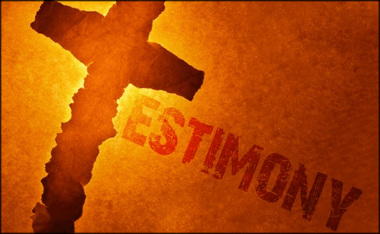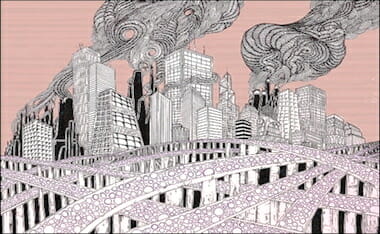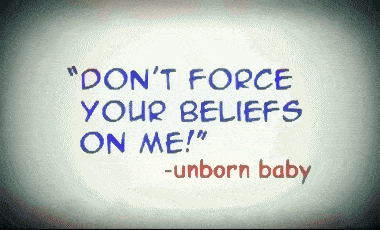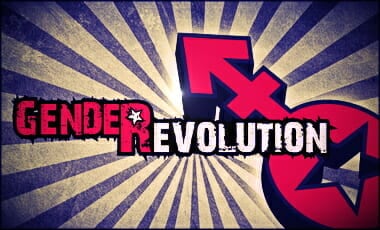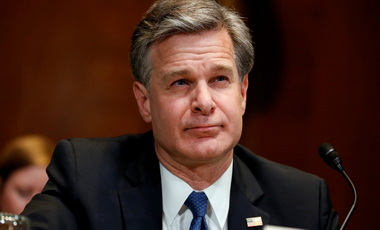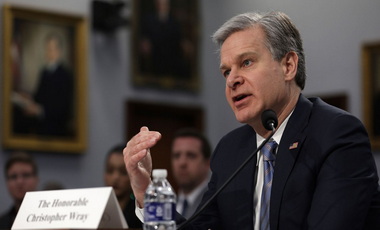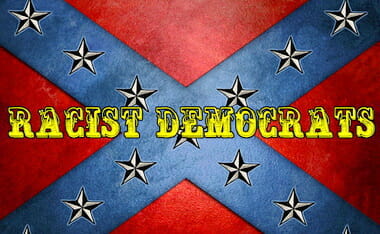A bit of a FLASHBACK for the uninitiated:
(Just a thought from myself. Many government agencies attempted to restrict blood donations to the vaccinated only
I cannot tell you how many times in conversations, roaming the internet, or the like I see myths about Ronald Reagan or “gay persecution” in shutting down “clubs” and “bars”. Issues surrounding Harvey Milk as some kind of hero in the face of all this, etc ad infinitum. However: History Is A Bitch to the Left!
But before getting to the quote I am finally cataloging as well as the two large excepts in their entirety — one being an article written in 2014 and the other is an entire chapter from David Horowitz’s book Dark Agenda — I wish to first refute the angelic realm set up around Harvey Milk. Again. Here is a conservative gay commentary on the totalitarian (total thought) nature of the Left in promoting a false veneer of historical accuracies (take note Gay Patriot as a blog is sadly defunct):
Here is a portion of a short commentary by Gay Patriot:
…Does anyone expect the activist left to be satisfied with their political victory? If you’ve studied the history of the Civil Rights movement, you know they didn’t stop after the passage of the Civil Rights Act. There are plenty of new frontiers for the Lesbian Gay Bullying Totalitarians to pursue and keep the donations to the Sharptons and Jacksons of the HRC and other professional activist organizations rolling in.
- Banning disagreement or criticisms of gay behavior through “anti-bullying” and “hate speech” legislation;
- Mandating school curricula to include “gay history” as well as museums and monuments to be demanded to gay heroes like Harry Hay, Larry Bruckner, and Harvey Milk;
- Forcing religious institutions to recognize gay marriages;
- Churches must be forced to perform gay marriages or lose tax exempt status. (Mosques, probably not)
No, this is not the end. This is nowhere near the end. This is just another milestone on the road to our social Pyongyang. The Supreme Court has rejected the rule of law twice in two days in favor of a Judiciary Politburo…
Here is another note regarding Harvey Milk from another post of mine:
- Obama also awarded Harvey Milk, the first openly gay elected leader in America — and a man credibly accused of statutory rape against a 16-year-old boy when he was in his 30s, as Matt Margolis has pointed out, both here on PJ Media and in his book The Scandalous Presidency of Barack Obama. — Responding To Political Hatred (Medal of Freedom Edition)
Okay… here is the small portion I always pull up in my head when I come across challenges in print or conversation, finally placed here on my site for my extended memory/reference:
“PERSECUTION” (Bath Houses and Blood Donations)
IN THE EARLY MORNING hours of June 28, 1969, New York City police raided the Stonewall Inn, a gay bar on Christopher Street in Greenwich Village. Police raids were a common occurrence at the Stonewall Inn, and the bar patrons usually cooperated with police. This night was different.
The patrons threw coins and bottles at police and refused to disperse. The commotion spilled out onto Christopher Street and attracted a crowd of onlookers. As arrests were made, a crowd of more than 400 people heckled and jeered the police. In minutes, the protest escalated into a violent clash in the street. Some protesters taunted the police with shouts of “Gay power!” That night, police arrested thirteen people, and dozens more were hospitalized.
The next night, a crowd again gathered in front of the Stonewall Inn. When police arrived, people shouted and chanted in protest. The gatherings clogged Christopher Street for six nights in a row. One of those nights again turned violent, causing numerous injuries. These events became known as the Stonewall Riots, and the site of the Stonewall Inn is considered the birthplace of the LGBT rights movement. “From the ashes of the Stonewall Riots,” boasted Mark Segal, one of the participants, “we created the Gay Liberation Front.”1
The Gay Liberation Front (GLF) took its name from the Vietnamese National Liberation Front, the official name of the Vietnamese Communist Viet Cong. This new movement would soon become as fierce an antagonist to the religious right (and vice versa) as the radical feminists. Eager to expand the gay rights community and increase its power, the Gay Liberation Front issued a manifesto of the movement’s goals: “We are a revolutionary homosexual group of men and women formed with the realization that complete liberation of all people cannot come about unless existing social institutions are abolished.”2 It was another grandiose leftist plan to reshape society and remake the world.
Sex with Strangers as a Revolutionary Act
The radicals defined gay liberation not as the inclusion of gay Americans into the existing social contract, but as the destruction of that contract. As the central symbol of their revolt, gay radicals practiced a defiant promiscuity. It was an in-your-face challenge to what they regarded as a repressive “sex-negative” culture. Gay radicals believed that monogamous marriage and the nuclear family were tyrannical structures imposed on them by their heterosexual “oppressors.” Their name for this oppression was “heteronormativity,” and they set out to overthrow it.
In the view of gay radicals, existing sexual prohibitions reflected no lessons drawn from humanity’s biological realities and moral experience; they were merely “social constructions” imposed by an oppressive culture. Consequently, gay liberators did not seek civic tolerance, respect, and integration into the public order of “bourgeois” life. On the contrary, they were determined to do away with traditional middle-class standards of morality, sexual restraint, and even public hygiene.
The effect of this radical agenda was immediate and devastating. At the height of the sixties, during the flowering of the sexual revolution, doctors saw the incidence of amebiasis, a parasitic sexually transmitted disease, increase fifty times in San Francisco, a center of gay life. The reason for this outbreak was promiscuous sex among gays.3 During the next decade, a tolerant American society retreated, while the sexual revolutionaries advanced. By the end of the seventies, two-thirds of gay men had already contracted hepatitis B.4 Yet criticism of gay sexual practices on any grounds whatsoever—including public health concerns—was immediately condemned as “homophobic,” a form of “racist” prejudice against gays.
Accommodating public officials licensed sexual gymnasiums called “bathhouses” and turned a blind eye toward public sex activity, including hookups between strangers in bookstore backrooms, bars, and “glory hole” establishments. A $100 million public sex industry flourished by decade’s end. Gay activists described the sex establishments as gay “liberated zones.”
One intellectual theorist of the movement, NYU professor Michael Warner, explained: “The phenomenology of a sex club encounter is an experience of world making. It’s an experience of being connected not just to this person but to potentially limitless numbers of people, and that is why it’s important that it be with a stranger”5 [emphasis added]. Warner was the leader of an organization called “Sex Panic!,” a name implying that anyone who thought that public sex with hundreds or thousands of strangers might be dangerous was merely having a panic attack caused by “sex-negative” prudery.
[….]
The only institution in a position to arrest the AIDS contagion at that time was the public health system. But public health officials were already under attack by gay radicals as instruments of the “sex-negative” society. Health officials were well aware that the gay bathhouses were a breeding ground for the various infections that ravaged the gay community. But fear of attacks from gay activists caused officials to take a hands-off policy toward the bathhouses.
Thus, an outbreak of herpes in the early seventies was a sufficient cause for public health officials to close heterosexual sex clubs like Plato’s Retreat. But gay sex clubs, which were spreading far more dangerous diseases, were left open. The reason was the revolution. Gay bathhouses were “symbols of gay liberation from a sex-negative society,” as one prominent activist put it.14 When health officials suggested that gay people could protect themselves by practicing “safer sex,” the gay left responded with hostility, calling the officials “homophobes,” “bigots,” and “Nazis.”
The radical harassment campaigns succeeded, and the bathhouses remained open. The enforcement of traditional public health practices had been rendered politically impossible. Consequently, the epidemic continued to spread, and young gay men continued to die.
[….]
When public health officials tried to institute screening procedures for the nation’s blood banks, and when they asked the gay community not to donate blood during the epidemic crisis, gay leaders denounced the proposals. They claimed that such proposals stigmatized homosexuals and infringed on their “right” to give blood.
The San Francisco Coordinating Committee of Gay and Lesbian Services, chaired by city official Pat Norman, issued a policy paper asserting that donor screening was “reminiscent of miscegenation blood laws that divided black blood from white” and “similar in concept to the World War II rounding up of Japanese-Americans in the western half of the country to minimize the possibility of espionage.”20 The fact that tainted blood donations gave surgical patients and other blood recipients a deadly incurable disease was not a consideration.
During my interview with Don Francis, I asked him when the primary public health methods of testing and contact tracing would be resumed. He said, “When enough people are dead.” It never happened. Apparently, the death toll was never high enough. In 1983, when our AIDS story was published, there were only 3,000 AIDS cases nationally, but they were doubling every six months.21
David Horowitz, Dark Agenda: The War to Destroy Christian America (West Palm Beach, FL: Humanix Books, 2018), 80-82, 85, 87-88. (JUMP TO FOOTNOTES)
“Ronald Reagan” (Calling Audibles and Budgets)
Ronald Reagan and AIDS: Correcting the Record (REAL CLEAR POLITICS | O.C. REGISTER)
I’ve never met Larry Kramer, but he and I have something in common: In the 1980s, we found Gary Bauer maddeningly obtuse on the question of whether Ronald Reagan should speak to Americans about the AIDS epidemic.
I was a reporter in the San Jose Mercury News Washington bureau covering the federal response to the epidemic. Bauer was a Reagan administration official aligned with other social conservatives resistant to having the president play a visible role on AIDS. Kramer was, and remains, a prominent gay rights activist.
In early 1987, after Bauer became chief White House domestic policy adviser, prominent voices in the medical community were calling for Reagan to deliver a major address about the crisis. Why have a “Great Communicator” in office, they said, if he won’t communicate the message that safe sex is a matter of life-or-death?
I put that question to Bauer in March of that year. He expressed dismay at the thought of a U.S. president uttering the word “condom.” But with so many people dying of this disease, I found his concern callous—and told him so.
Larry Kramer tells a similar tale, but with more sinister undertones. He claims that in “a personal communication with me in his White House office in April of 1983,” Bauer told him that the president was “irrevocably opposed to anything having to do with homosexuality.”
I’m skeptical. For starters, in 1983 Gary Bauer didn’t work in the White House; he was a mid-level functionary in the Department of Education. More importantly, even before he became president, Reagan had proven the opposite of “irrevocably opposed” to gays, and had demonstrated this tolerance at substantial risk to his presidential ambitions. One can argue that no American politician ever confronted anti-gay prejudice more courageously.
That was in 1978. I was covering education for a California newspaper at the time. Three years removed from the governorship, Reagan was the anointed hero of American conservatism and the presumptive 1980 Republican presidential nominee when an Orange County state legislator, John Briggs, spearheaded a ballot initiative called Proposition 6 to bar gays and lesbians from teaching in public schools.
Reagan’s political handlers advised him to steer clear, but gay Republicans privately asked him to get involved, as did some Democratic friends and some Hollywood pals. Briggs, who wrongly assumed Reagan was on his side, publicly goaded him, too.
Intensive politicking by the California’s liberal establishment had pared Proposition 6’s support from a whopping 75 percent to 55 percent, but that’s where the needle stayed—until Reagan spoke out. In September, he told reporters of his opposition, and followed up with an op-ed saying Proposition 6 would do “real mischief.” Support for it eroded, even in Briggs’ home county, and it lost handily.
One of those who’d urged Reagan to intervene was Los Angeles gay activist David Mixner, a friend of future president Bill Clinton. “Never have I been treated more graciously by a human being,” Mixner said of his meeting with Reagan. “He turned opinion around and saved that election for us. He just thought it was wrong and came out against it.”
This didn’t surprise those who knew Reagan. Like most movie actors, he had several gay friends. But even this is used against him by partisans. “Reagan did not even mention the word AIDS,” Washington Post columnist Richard Cohen wrote last week, “until the disease was impossible to ignore and his friend Rock Hudson had died from it.”
This is almost true. It was Hudson who wouldn’t discuss AIDS; Reagan actually mentioned the disease publicly for the first time two weeks before his friend passed away. But Cohen gets his information about Reagan and AIDS from Larry Kramer—his column was touting Kramer’s new HBO movie—and Kramer is not a reliable source on the 40th president.
He often claims that Reagan never mentioned AIDS for the first seven years of his presidency. Although this falsehood is easily checked, it has spread, like its own kind of virus, into official government documents, liberals’ institutional memories, and countless news accounts from organizations with contrary evidence in their own files. It’s a fabrication with consequences. Three years after Reagan’s death, a New York Review of Books essay offering a measured reassessment of Reagan prompted this response from Kramer:
“Ronald Reagan may have done laudable things but he was also a monster and, in my estimation, responsible for more deaths than Adolf Hitler,” he wrote. “He is one of the persons most responsible for allowing the plague of AIDS to grow from 41 cases in 1981 to over 70 million today. He refused to even say the word out loud for the first seven years of his presidency and when he did speak about it, it was with disdain.”
Comparing a political opponent to Hitler is obvious evidence of fanaticism, but we are living in hyper-partisan times. Rep. Henry Waxman’s official congressional website repeats the “seven years” calumny while adding that “the Reagan administration consistently refused to commit the resources and effort necessary to provide urgently needed research, health care, and preventive services.”
For the record, Reagan first mentioned AIDS, in response to a question at a press conference, on Sept. 17, 1985. On Feb. 5, 1986, he made a surprise visit to the Department of Health and Human Services where he said, “One of our highest public health priorities is going to be continuing to find a cure for AIDS.” He also announced that he’d tasked Surgeon General C. Everett Koop to prepare a major report on the disease. Contrary to the prevailing wisdom, Reagan dragged Koop into AIDS policy, not the other way around.
As for Waxman’s recollections about AIDS funding, he does an unusual thing for a politician: He’s forgotten the success he and other Democrats had in convincing Reagan to spend more money. The administration increased AIDS funding requests from $8 million in 1982 to $26.5 million in 1983, which Congress bumped to $44 million, a number that doubled every year thereafter during Reagan’s presidency.
Finally, the claim that Reagan spoke about AIDS sufferers with “disdain” is simply a smear. Nothing like that ever happened, except maybe in the fictional “The Reagans” miniseries in which Barbra Streisand’s husband played Reagan as a bigot and rube.
In real life—that is to say in 1983, early in the AIDS crisis—HHS Secretary Margaret Heckler (accompanied by New York City Mayor Ed Koch, another Larry Kramer target), went to the hospital bedside of a 40-year-old AIDS patient named Peter Justice. Heckler, a devout Catholic, held the dying man’s hand, both out of compassion and to allay fears about how the disease was spread.
“We ought to be comforting the sick,” said Ronald Reagan’s top-ranking health official, “rather than afflicting them and making them a class of outcasts.”
“I’m delighted she’s here,” Justice said. “I’m delighted she cares.”
Here is the entire 9th chapter from David Horowitz’s book, David Horowitz, Dark Agenda: The War to Destroy Christian America (West Palm Beach, FL: Humanix Books, 2018).
9 A Radical Epidemic
IN THE EARLY MORNING hours of June 28, 1969, New York City police raided the Stonewall Inn, a gay bar on Christopher Street in Greenwich Village. Police raids were a common occurrence at the Stonewall Inn, and the bar patrons usually cooperated with police. This night was different.
The patrons threw coins and bottles at police and refused to disperse. The commotion spilled out onto Christopher Street and attracted a crowd of onlookers. As arrests were made, a crowd of more than 400 people heckled and jeered the police. In minutes, the protest escalated into a violent clash in the street. Some protesters taunted the police with shouts of “Gay power!” That night, police arrested thirteen people, and dozens more were hospitalized.
The next night, a crowd again gathered in front of the Stonewall Inn. When police arrived, people shouted and chanted in protest. The gatherings clogged Christopher Street for six nights in a row. One of those nights again turned violent, causing numerous injuries. These events became known as the Stonewall Riots, and the site of the Stonewall Inn is considered the birthplace of the LGBT rights movement. “From the ashes of the Stonewall Riots,” boasted Mark Segal, one of the participants, “we created the Gay Liberation Front.”1
The Gay Liberation Front (GLF) took its name from the Vietnamese National Liberation Front, the official name of the Vietnamese Communist Viet Cong. This new movement would soon become as fierce an antagonist to the religious right (and vice versa) as the radical feminists. Eager to expand the gay rights community and increase its power, the Gay Liberation Front issued a manifesto of the movement’s goals: “We are a revolutionary homosexual group of men and women formed with the realization that complete liberation of all people cannot come about unless existing social institutions are abolished.”2 It was another grandiose leftist plan to reshape society and remake the world.
Sex with Strangers as a Revolutionary Act
The radicals defined gay liberation not as the inclusion of gay Americans into the existing social contract, but as the destruction of that contract. As the central symbol of their revolt, gay radicals practiced a defiant promiscuity. It was an in-your-face challenge to what they regarded as a repressive “sex-negative” culture. Gay radicals believed that monogamous marriage and the nuclear family were tyrannical structures imposed on them by their heterosexual “oppressors.” Their name for this oppression was “heteronormativity,” and they set out to overthrow it.
In the view of gay radicals, existing sexual prohibitions reflected no lessons drawn from humanity’s biological realities and moral experience; they were merely “social constructions” imposed by an oppressive culture. Consequently, gay liberators did not seek civic tolerance, respect, and integration into the public order of “bourgeois” life. On the contrary, they were determined to do away with traditional middle-class standards of morality, sexual restraint, and even public hygiene.
The effect of this radical agenda was immediate and devastating. At the height of the sixties, during the flowering of the sexual revolution, doctors saw the incidence of amebiasis, a parasitic sexually transmitted disease, increase fifty times in San Francisco, a center of gay life. The reason for this outbreak was promiscuous sex among gays.3 During the next decade, a tolerant American society retreated, while the sexual revolutionaries advanced. By the end of the seventies, two-thirds of gay men had already contracted hepatitis B.4 Yet criticism of gay sexual practices on any grounds whatsoever—including public health concerns—was immediately condemned as “homophobic,” a form of “racist” prejudice against gays.
Accommodating public officials licensed sexual gymnasiums called “bathhouses” and turned a blind eye toward public sex activity, including hookups between strangers in bookstore backrooms, bars, and “glory hole” establishments. A $100 million public sex industry flourished by decade’s end. Gay activists described the sex establishments as gay “liberated zones.”
One intellectual theorist of the movement, NYU professor Michael Warner, explained: “The phenomenology of a sex club encounter is an experience of world making. It’s an experience of being connected not just to this person but to potentially limitless numbers of people, and that is why it’s important that it be with a stranger”5 [emphasis added]. Warner was the leader of an organization called “Sex Panic!,” a name implying that anyone who thought that public sex with hundreds or thousands of strangers might be dangerous was merely having a panic attack caused by “sex-negative” prudery.
Calculated to Provoke the Religious Right
As the gay epidemics metastasized, nature began to assert itself with ever more devastating results. Opportunistic but treatable infections flourished in the petri dish of the liberated culture, as gay radicals went on with their defiant acts. Even the overloaded venereal disease clinics became trysting places in the liberated culture.
In his authoritative history of the AIDS epidemic, gay reporter Randy Shilts described the atmosphere in the liberated zones on the eve of the AIDS outbreak:
Gay men were being washed by tide after tide of increasingly serious infections. First it was syphilis and gonorrhea. Gay men made up about 80% of the 70,000 annual patient visits to [San Francisco’s] VD clinics. Easy treatment had imbued them with such a cavalier attitude toward venereal diseases that many gay men saved their waiting-line numbers, like little tokens of desirability, and the clinic was considered an easy place to pick up both a shot and a date.6
Far from causing radical activists to rethink their agenda, the burgeoning epidemics prompted them to escalate their assault. When Dr. Dan William, a gay specialist, warned of the danger of continued promiscuity, he was publicly denounced as a “monogamist” in the gay press. When playwright Larry Kramer issued a similar warning, he was accused in the New York Native of “gay homophobia and anti-eroticism.”
At a public meeting in the year preceding the first AIDS cases, Edmund White, coauthor of The Joy of Gay Sex, proposed that “gay men should wear their sexually transmitted diseases like red badges of courage in a war against a sex-negative society.” Michael Callen, a gay youth present at the meeting, had already had 3,000 sexual partners and was shortly to come down with AIDS. When he heard White’s triumphant defiance of the laws of nature, he thought, “Every time I get the clap I’m striking a blow for the sexual revolution.”7
Callen later founded People With AIDS, and, in a courageously candid reflection, wrote:
Unfortunately, as a function of a microbiological . . . certainty, this level of sexual activity resulted in concurrent epidemics of syphilis, gonorrhea, hepatitis, amoebiasis, venereal warts and, we discovered too late, other pathogens. Unwittingly, and with the best of revolutionary intentions, a small subset of gay men managed to create disease settings equivalent to those of poor third-world nations in one of the richest nations on earth.8
Nor did the diseases remain stable. The enteric diseases—amebiasis, gay bowel syndrome, giardiasis, and shigellosis—were followed by an epidemic of hepatitis B, which Randy Shilts called “a disease that had transformed itself, via the popularity of anal intercourse, from a blood-borne scourge into a venereal disease.”9 The hepatitis B virus was transmitted in exactly the same way as the newly identified AIDS virus.
While these epidemics were progressing, the political leaders of the gay community held gay pride parades in major cities like Chicago, San Francisco, and New York. The theme of these parades reflected the liberation ethos of the movement. Half-naked (and sometimes fully naked) men brazenly flaunted their sexuality for maximum shock effect—a deliberate attempt to offend and affront what they regarded as the reactionary culture of the time.
These flamboyant displays of gay liberation persisted for twenty years, inspiring a satiric critique by the liberal website The Onion, “Gay-Pride Parade Sets Mainstream Acceptance of Gays Back 50 Years.” The article quotes an imaginary straight female who witnesses a gay pride march in Los Angeles, remarking, “I’d always thought gays were regular people, just like you and me, and that the stereotype of homosexuals as hedonistic, sex-crazed deviants was just a destructive myth. Boy, oh, boy, was I wrong.”10
Flaunting one’s sexuality was considered a revolutionary act. The gay liberation activists were not merely trying to get attention or offend heterosexual society, or, more importantly, to persuade society to accept them as individuals on their own terms. They were trying to change the world by forcing society to accept aggressive public sexuality and, more importantly, promiscuous sexual behavior.
The political effect of these public displays of hedonism was the equivalent of a Supreme Court decision overthrowing tradition and precedent. They were calculated to provoke extreme reactions from the religious right. And they did.
A Clash of Hatreds
The leading religious opponent of gay liberation was Moral Majority founder Jerry Falwell. He said, “AIDS is not just God’s punishment for homosexuals; it is God’s punishment for the society that tolerates homosexuals.”11 It was a statement bigoted and un-Christian. Similar views were expressed by other vocal leaders of the religious right, while the majority of believers, however repugnant they found these antics, observed the Christian creed to “love the sinner but hate the sin.”
The loud and confrontational voices of the gay radicals were also a minority within the gay community, albeit a large and active one. Most gay people had no interest in taking part in gay pride parades. They just wanted to be accepted and go about their lives. But to much of society, the antagonistic gay activists were the face of gay liberation. They were the leaders—and their rhetoric was no less hateful, deplorable, and intimidating than Falwell’s.
Larry Kramer, a prominent gay writer and activist, was an opponent of such radical organizations as Michael Warner’s Sex Panic! But like many of his peers, Kramer blamed the Republican president for the epidemic. Kramer was well aware that Reagan had been elected with the support of the religious right, which he regarded as the oppressor enemy. “Ronald Reagan may have done laudable things,” Kramer said, “but he was also a monster and, in my estimation, responsible for more deaths than Adolf Hitler.”12 This was the expression of an extreme and baseless hatred all too common on the left.
There was little that Ronald Reagan could have done to stop the epidemic. He was so hated and mocked by the left that any attempt to speak about the AIDS epidemic would have meant entering a political minefield. The claim that he didn’t provide enough money for research was a canard, since public health officials already knew before they isolated the virus that HIV was transmitted like hepatitis B, which meant that unprotected anal sex with strangers was an extremely dangerous practice.
Members of the Reagan administration also demonstrated genuine concern for the victims of the epidemic. In 1983, still early in its progress, Reagan’s Secretary of Health and Human Services, Margaret Heckler, made a publicized visit to the hospital bedside of a forty-year-old gay man dying of AIDS. Not only was Heckler the top-ranking health official in the Reagan administration; she was a devout Catholic. She held the man’s hand out of compassion—and also to calm public fears that the disease might be spread by casual contact. Afterward she said, “We ought to be comforting the sick, rather than afflicting them and making them a class of outcasts.”13
The only institution in a position to arrest the AIDS contagion at that time was the public health system. But public health officials were already under attack by gay radicals as instruments of the “sex-negative” society. Health officials were well aware that the gay bathhouses were a breeding ground for the various infections that ravaged the gay community. But fear of attacks from gay activists caused officials to take a hands-off policy toward the bathhouses.
Thus, an outbreak of herpes in the early seventies was a sufficient cause for public health officials to close heterosexual sex clubs like Plato’s Retreat. But gay sex clubs, which were spreading far more dangerous diseases, were left open. The reason was the revolution. Gay bathhouses were “symbols of gay liberation from a sex-negative society,” as one prominent activist put it.14 When health officials suggested that gay people could protect themselves by practicing “safer sex,” the gay left responded with hostility, calling the officials “homophobes,” “bigots,” and “Nazis.”
The radical harassment campaigns succeeded, and the bathhouses remained open. The enforcement of traditional public health practices had been rendered politically impossible. Consequently, the epidemic continued to spread, and young gay men continued to die.
The Myth of the “Equal Opportunity Virus”
I coauthored of one of the early articles on AIDS in 1983.15 When I interviewed Don Francis, the Centers for Disease Control official in charge of fighting both the hepatitis B and AIDS epidemics, he explained why public health officials didn’t close the bathhouses during the epidemics that preceded AIDS in the 1960s and 1970s. “We didn’t intervene,” he told me, “because we felt that it would be interfering with an alternative lifestyle.”16 I understood what he really meant. He didn’t want his agency to be picketed and attacked as homophobic, and he didn’t want gay activists calling the health officials Nazis.
In 1983 when the article appeared, the AIDS epidemic was still confined to three cities with large homosexual communities: San Francisco, Los Angeles, and New York. At the time, the number of AIDS carriers was small enough that aggressive public health methods might have prevented the outward spread of the contagion. But every effort to take normal precautionary measures was thwarted by the political juggernaut that the gay liberation movement had created.
All three epicenters of the epidemic were controlled by the Democratic Party. Gay radicals were a key faction in the party, especially in San Francisco. Gays were also part of the radical “rights coalition,” which included feminists and pro-abortion crusaders. The Democratic Party lined up behind the radicals and supported their efforts to block the enforcement of public health policy.
I interviewed Dr. Mervyn Silverman, the liberal director of public health for the City of San Francisco, and asked him why he didn’t close the bathhouses, since they were greenhouses of the disease. He told me he wouldn’t do so because they were valuable centers of “education” about AIDS.17 He told me this even though there was no such education going on in them. The bathhouses existed only to facilitate anonymous, promiscuous, and dangerous public sex.I knew exactly where Dr. Silverman got his medical expertise on this subject. He was speaking the party line of the Sex Panic! fanatics.18
In fact, the public health system had long been developing and using successful methods for fighting sexually transmitted diseases. Testing and contact tracing were among the most tried and true measures to identify carriers and warn potential targets. Separating carriers from the uninfected who were at risk was the key to fighting an epidemic, as Don Francis had informed me.
But gay leaders successfully attacked and blocked both procedures, which would have made these precautions possible. They condemned commonsense preventive measures as “homophobic” efforts to stigmatize gays and identify them for future “roundups.” Employing these proven public health measures, gay radicals claimed, would make the victims responsible for their plight. Such emotional arguments ignored the fact that those already victimized by AIDS were now potential predators able to infect healthy members of the gay community.
Studies showed that the sexual transmission of the virus overwhelmingly occurred through passive anal sex. Yet that term, or “promiscuous anal sex,” never appeared in public health warnings about the disease—omissions demanded by gay leaders. A $100 million government “information” campaign, led by Surgeon General Everett Koop, was conducted with the slogan “AIDS is an equal opportunity virus.” This claim—and only this claim —was politically permissible, according to gay leaders.
But the claim was false. Sexually transmitted AIDS wasn’t an equal opportunity virus that affected heterosexuals and homosexuals alike. Twenty years into the epidemic, eight out of ten sexually transmitted AIDS cases stemmed from men having sex with men.19
A Preventable Death Toll
The only purpose of the “AIDS information” campaign was to soothe gay sensibilities, so gay people wouldn’t fear that they were about to be put into concentration camps, as their leaders claimed. When public health officials tried to institute screening procedures for the nation’s blood banks, and when they asked the gay community not to donate blood during the epidemic crisis, gay leaders denounced the proposals. They claimed that such proposals stigmatized homosexuals and infringed on their “right” to give blood.
The San Francisco Coordinating Committee of Gay and Lesbian Services, chaired by city official Pat Norman, issued a policy paper asserting that donor screening was “reminiscent of miscegenation blood laws that divided black blood from white” and “similar in concept to the World War II rounding up of Japanese-Americans in the western half of the country to minimize the possibility of espionage.”20 The fact that tainted blood donations gave surgical patients and other blood recipients a deadly incurable disease was not a consideration.
During my interview with Don Francis, I asked him when the primary public health methods of testing and contact tracing would be resumed. He said, “When enough people are dead.” It never happened. Apparently, the death toll was never high enough. In 1983, when our AIDS story was published, there were only 3,000 AIDS cases nationally, but they were doubling every six months.21
When I was researching the AIDS article in 1983, many doctors and researchers I spoke to speculated—correctly, as it turned out—that an AIDS vaccine would be decades away, if one was ever developed at all. To date, there is no licensed HIV/AIDS vaccine, although HIV-infected patients are living longer thanks to new antiviral therapies. Hearing that prospects for a vaccine were so bleak made me feel helpless and deeply saddened. When I did a mental calculation of the coming death toll, I figured that in twenty years there would be 200,000 dead. My arithmetic was faulty. By 2003 there were 523,442 recorded deaths from AIDS in the United States, most of them young, and previously healthy, gay men.22 Most of those deaths could have been prevented if the public health system had not been crippled by radical ideologues.
Attack on a Church
The gay radicals kept the bathhouses open as “symbols of the revolution.” They shut down the testing and contact-tracing programs, which would have exposed the path of the epidemic, allowing health officials to warn those in its path. The radicals did, however, agree on one prophylactic measure to save lives: the use of condoms to practice “safe sex.” The gay community leaders turned it into a campaign with posters proclaiming “Safe Sex Is Hot Sex.”23 Unlike other measures to prevent the spread of disease, condom use was not viewed as “homophobic” by the gay community and wouldn’t interfere with the liberated lifestyle.
Using condoms was prudent advice, but it relied on the responsible behavior of individuals. Responsibility, on the other hand, was precisely the moral characteristic that gay liberation had thrown to the winds. Condom use also brought the activists up against the moral positions of their Christian nemesis, the Catholic Church. The church advocated sexual abstinence and opposed prophylactic measures, even though condoms didn’t serve a contraceptive purpose in gay sex. In a statement titled, “Call to Compassion,” the Catholic bishops warned against the notion of safe sex because it “compromises human sexuality and can lead to promiscuous behavior.” Promiscuous behavior was, of course, the rallying cry of the liberationists— and the root cause of the epidemic.24
This moral conflict led directly to the most notorious demonstration of the AIDS-era protests. In 1989, Larry Kramer’s newly formed ACT-UP (AIDS Coalition to Unleash Power) joined with WHAM! (Women’s Health Action and Mobilization) to attack a Sunday mass at St. Patrick’s Cathedral in New York City. Over 4,000 raucous protesters gathered outside the cathedral while dozens rushed inside screaming “You’re killing us!” and “Murderers!” at the bewildered congregation. In a calculated outrage that brought widespread condemnation, even from the gay community, one activist crushed a wafer symbolizing the body of Christ. The cardinal called it a “desecration.”
While extreme, these acts of violent hatred were not unusual. A New York Times reporter sympathetic to the gay cause observed:
Rarely are Act-Up’s adversaries seen as well-meaning people working in a complicated world. In Act-Up’s eyes they are liars, hypocrites—even murderers. In 1988, Dr. Joseph, then the city’s Health Commissioner, reduced by half his estimate of the number of city residents infected by the virus. While Dr. Joseph accompanied his study with the warning that no one should think it “in any way reduces the services needed,” Act-Up members accused him of a plot to accomplish that and other nefarious ends. They splashed paint and posters on his house, occupied his office, and called him a Nazi.25
Yet the Times story praised ACT-UP’s offensive tactics for allegedly prodding the government to approve experimental drugs faster. Drugs, however, could not provide an immediate solution to the drug-resistant virus. Thirty years after the attack on St. Patrick’s, medical advances have reduced fatalities and stemmed the tide of the epidemic—but there still is no cure for AIDS.
By promoting sexual promiscuity as a revolutionary act, by disregarding proven social restraints, and by viciously attacking all critics, gay activists led their own community into one of the worst human disasters in American history. The radicals were so focused on their agendas, and so bent on destroying their perceived enemies, that they lost sight of reality: their revolution was killing the people it was intended to liberate.
A Leftist Assault on Freedom and Equality
The radicals rejected the traditional American framework of pluralism, civility, and compromise in favor of a revolutionary agenda. Like radical feminists, they perceived any limits to their desires as oppression by the social order—concluding that the social order had to be destroyed. Such sweeping attempts at social transformation have brought disaster throughout history, no more so than in the last century, which saw epic catastrophes created by National Socialists and Communists seeking better worlds.
Unfortunately, the radical left was able to continue on its long march through America’s institutions, particularly universities, the media culture, and the Democratic Party, coalescing its forces and marshaling its weapons under the ideological banner of “identity politics.” This was the same politics that made the gay community resistant to proven public health methods and common sense. This was the same victim-versus-oppressor politics that caused homosexuals to view heterosexuals and “heteronormativity” as their enemies.
Since the seventies, the radical movement had been establishing a political base in the universities, purging conservative faculty and texts, and transforming scholarly disciplines into political training programs. These leftist indoctrination programs are referred to as “oppression studies,” “social justice studies,” “feminist studies,” “whiteness studies,” and the like. So advanced has this transformation become that Andrew Sullivan, a principled liberal and prominent gay activist, felt impelled to sound an alarm. He pointed out that this radical movement posed an existential threat to the American order of pluralism and individual freedom:
When elite universities shift their entire worldview away from liberal education, as we have long known it, toward the imperatives of an identity-based “social justice” movement, the broader culture is in danger of drifting away from liberal democracy as well. If elites believe that the core truth of our society is a system of interlocking and oppressive power structures based around immutable characteristics like race or sex or sexual orientation, then sooner rather than later, this will be reflected in our culture at large. What matters most of all in these colleges—your membership in a group that is embedded in a hierarchy of oppression—will soon enough be what matters in the society as a whole.26
Sullivan went on to describe how this notion constituted an assault on the fundamental American principle of the freedom and equality of individuals:
The whole concept of an individual who exists apart from group identity is slipping from the discourse. The idea of individual merit—as opposed to various forms of unearned “privilege”—is increasingly suspect. The Enlightenment principles that formed the bedrock of the American experiment—untrammeled free speech, due process, individual (rather than group) rights—are now routinely understood as mere masks for “white male” power, code words for the oppression of women and nonwhites. Any differences in outcome for various groups must always be a function of “hate,” rather than a function of nature or choice or freedom or individual agency. And anyone who questions these assertions is obviously a white supremacist himself.
The only thing Sullivan missed in this ominous warning was the religious foundation of the principles under attack—the “priesthood of all believers” and the salvation of individual souls. These were the beliefs, rooted in faith, that made the Christian right the most vocal and dedicated opponent of the movement Sullivan feared.
FOOTNOTES
[1] Mark Segal, “I Was at the Stonewall Riots. The Movie ‘Stonewall’ Gets Everything Wrong,” PBS.org, September 23, 2015, https://www.pbs.org/newshour/arts/stonewall-movie.
[2] “Gay Revolution Comes Out,” New York Rat Magazine, August 12–26, 1969. The Rat was a publication put out by the Students for a Democratic Society.
[3] Randy Shilts, And the Band Played On (New York: St. Martin’s Press, 1987), Kindle edition, p. 19.
[4] Ibid., p. 18.
[5] https://en.wikipedia.org/wiki/Sex_Panic!.
[6] Shilts, op. cit., p. 39.
[7] Michael Callen, Surviving AIDS (New York: HarperCollins, 1990).
[8] Ibid.
[9] Shilts, op. cit., p. 39.
[10] https://www.theroot.com/where-s-the-pride-in-pride-parades-1790869593.
[11] http://thinkexist.com/quotation/aids_is_not_just_god-s_punishment_for_homosexuals/198214.html.
[12] https://www.realclearpolitics.com/articles/2014/06/01/ronald_reagan_and_aids_correcting_the_rec
[13] Ibid.
[14] My interview with gay activist Konstantin Berlandt.
[15] Peter Collier and David Horowitz, “Whitewash,” California Magazine, July 1983. Reprinted as “Origins of a Political Epidemic,” in David Horowitz, Culture Wars, which is volume V of The Black Book of the American Left (Los Angeles: Second Thought Books, 2015).
[16] My interview with Dr. Don Francis.
[17] My interview with Dr. Mervyn Silverman.
[18] Michael Warner, The Trouble with Normal: Sex, Politics, and the Ethics of Queer Life (New York: Free Press, 1999), p. 216.
[19] https://en.wikipedia.org/wiki/Epidemiology_of_HIV/AIDS#United_States.
[20] Shilts, op. cit., p. 246.
[21] Collier and Horowitz, op. cit.
[22] http://www.amfar.org/thirty-years-of-hiv/aids-snapshots-of-an-epidemic/.
[23] Anthony M. Petro, After the Wrath of God: AIDS, Sexuality, and American Religion (New York: Oxford University Press, 2015), Kindle edition, p. 146.
[24] Ibid., p. 133.
[25] https://www.nytimes.com/1990/01/03/nyregion/rude-rash-effective-act-up-shifts-aids-policy.html.
[26] https://nymag.com/daily/intelligencer/2018/02/we-all-live-on-campus-now.html.

